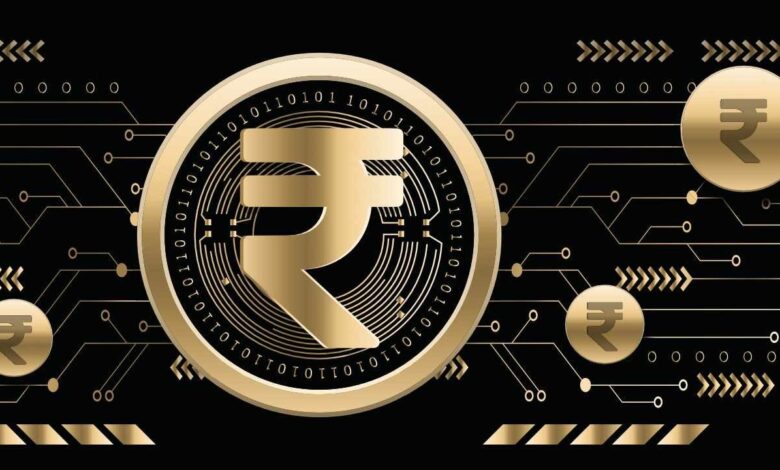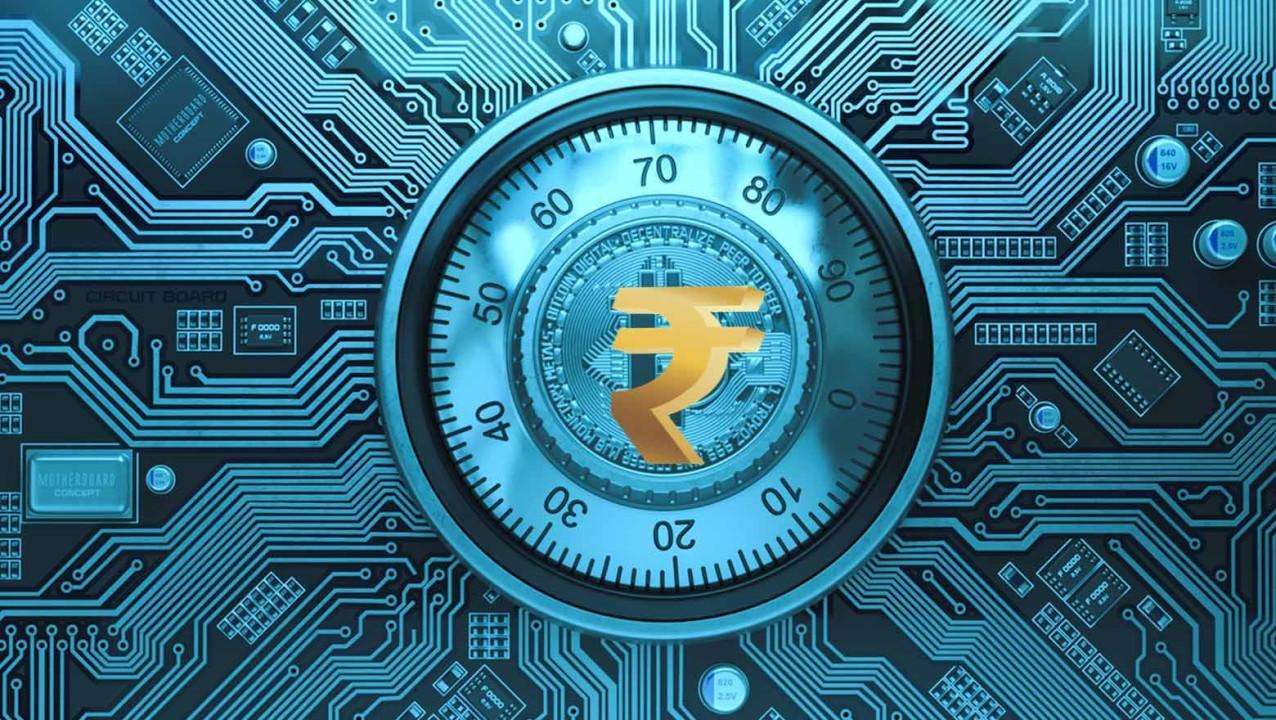India launches digital rupee pilot project 2022: What is it and how will it work?

In the beginning, four banks in India: Mumbai, New Delhi, Bengaluru, and Bhubaneswar, will issue digital tokens in the current same denominations as paper money: State Bank of India, ICICI Bank, and Yes Bank, and also IDFC First Bank. These tokens can be used to make and receive payments.
The much-anticipated Central Bank Digital Currency (CBDC), a type of government-issued cryptocurrency, will go live for retail users on Thursday, according to the current Reserve Bank of India (RBI) (December 1).
Who has access to CBDC retail?
The first stage of a pilot project, covering specific locations and also banks in a very closed user group (CUG) comprised of main participating customers and merchants, will be launched on December 1.
As part of the pilot, customers and merchants will also be able to use the digital rupee (e-R), or e-rupee, in four cities: Mumbai, New Delhi, Bengaluru, and Bhubaneswar. The controlled introduction of digital currency in these four cities will be overseen by four banks: State Bank of India, ICICI Bank, Yes Bank, and IDFC First Bank.
The service will be available in Ahmedabad, Gangtok, Guwahati, and Hyderabad, Indore, and Kochi, Lucknow, Patna, and Shimla in the future. The pilot will include four additional banks, according to the RBI: Bank of Baroda, and Union Bank of India, and HDFC Bank, and Kotak Mahindra Bank.

According to the recent statement, the pilot’s parameters may be gradually expanded to mainly include more banks, users, and locations.
For retail transactions, which digital rupee will be used?
The retail e-rupee will be used for retail transactions and will primarily function as an electronic version of cash. It can be used by anyone, including the private sector, non-financial consumers, and businesses, because it will be a direct liability of the central bank. It will also be able to provide safe money payment and settlement access.
The RBI previously stated: “CBDC is a digital legal tender issued by a central bank that is interchangeable with fiat currency and is identical to fiat currency except for its appearance.
How does the retail digital rupee work?
The e-R would be a digital token that would function as a money substitute, distributed through intermediaries such as banks, and issued in the same denominations as coins and paper money.
According to the RBI, users will be able to conduct e-R transactions using a digital wallet provided by participating banks and stored on mobile phones and other devices.
P2P and P2M transactions are both possible (P2M), and QR codes displayed in retail establishments can be used to make payments to merchants. “The e-R would have real-world characteristics such as trust, safety, and settlement finality. It will not accrue interest, according to the RBI, and can be converted into other forms of payment, such as bank deposits.
So, what exactly is the second kind of digital rupee?
The RBI classified the digital rupee into general purpose (retail) and wholesale categories based on its usage and functions, as well as the various levels of accessibility.
The RBI introduced the digital rupee for the wholesale sector on November 1 to settle secondary market transactions in government securities.
Wholesale CBDC is only available through a few financial institutions. By making the settlement systems for financial transactions conducted by banks in the government securities (G-Sec) segment, the interbank market, and the capital market more secure and efficient, it has the potential to reduce operational costs, improve collateral utilisation, and improve liquidity management.
So, why do we need a retail e-rupee pilot launch?
The pilot programme, according to the central bank, will test the stability of the entire creation, distribution, and retail use of digital rupees in real-time.
“Various features and applications of the e-R token and architecture will be tested in subsequent pilots based on the lessons learned from this pilot,” according to the statement.
What benefits does the e-rupee offer?
The RBI previously stated that the main reasons for considering the issuance of CBDC in India include, among other things, lowering operational costs associated with physical cash management, promoting financial inclusion, and improving the payments system’s resilience, efficiency, and innovation.

It will improve the efficiency of the settlement system, encourage cross-border payment innovation, and give the general public access to the uses that any private virtual currency can provide without the risks.
The Reserve Bank of India has repeatedly expressed concern about the use of private cryptocurrencies like Bitcoin, Ether, and others for money laundering, terrorism financing, tax evasion, and other illegal activities. Its own CBDC launch was viewed as a way to balance the benefits and drawbacks of digital currency.
As a digital currency, UPI vs. the RBI’s e-Rupee
What is the definition of retail e-Re?
CBDC, also known as the e-Rupee, is a central bank digital currency (e-Re). It functions as legal tender or electronic money. E-Re is available in both wholesale and retail quantities. The retail version’s pilot programme began on November 1, while the latter’s pilot programme began on December 1. The first phase of the pilot will involve four banks: SBI, ICICI, IDFC First, and YES Bank. After that, the list will be expanded to include four more banks: HDFC Bank, Bank of Baroda, Union Bank, and Kotak Mahindra Bank.
In the same way that telecom operators launch new products, E-Re will be tested on closed user groups, or CUGs.
Who is it intended for?
Customers of the banks involved in the project are targeted during the pilot phase, which aims to evaluate the product’s effectiveness. Because e-Re is a virtual version of cash, it will be usable by everyone once it is fully implemented.
What will it be used for?
Individuals can use the retail version of e-Re for any cash transaction, including purchases, gifts to loved ones, debt repayment, and so on.
However, because users and merchants would be limited to the CUG at first, the uses would be limited. Although no transaction volumes or values are set, e-Re may initially be limited to low-ticket uses.
How will it function?
Consider how cash is used from a digital wallet rather than a physical wallet; e-Re would function similarly and bear the sovereign seal. The e-Re product would be a pushed item during the pilot phase.
Banks would send emails or text messages to specific customers with a link to download the e-Re app. The customer verification process, also known as KYC, would be carried out using the mobile number, and the digital wallet would be available for use once KYC was completed successfully.
After that, the user can transfer funds from their bank account to their wallet. Simply put, instead of withdrawing cash from an ATM, you deposit funds into a digital wallet.
When parked in the e-wallet, the amount transferred is assumed to be in exact physical cash denominations and does not accrue interest. As a result, one way to determine whether or not e-Re will be accepted is to ask users how much non-interest-generating money they are willing to accept.
What motivates the RBI to promote the e-Re?
With e-Re, you can save money on printing, shipping, and storing money and coins. The government’s larger use-case goals include formalising digital money consumption and promoting financial inclusion. E-Re is also intended for those who, like a pre-paid mobile recharge card, can use digital currencies but do not have a bank account. Likewise, it is aimed at all mobile phone owners, not just smartphone users.
Will the use of e-Re reduce UPI?
Despite this serious concern, UPI can still attract subscribers.
UPI is based on the settlement of two banks. In other words, money transfers are instant on the front end, but inter-bank settlements take about a day behind the scenes.
There is a risk of settlement because UPI uses an intermediary. There is no risk of settlement with this product because it is issued by the RBI and may be significantly faster.

Furthermore, because e-Re is a wallet-to-wallet transfer, no transaction or audit trail is left, whereas UPI does because it is a bank-to-bank payment mode. The RBI will almost certainly allow anonymity for small-ticket e-Re transactions. E-Re is preferred by those who do not require an audit trail.
Three, because there are no fees associated with using cash, customers are unlikely to be charged for using e-Re. UPI is currently free; however, fees may be imposed in the future.
If e-Re proves to be reliable, effective, and free of technical issues, users may abandon UPI.
Those who prefer to keep their money in interest-bearing bank deposits and use those deposits to make payments, on the other hand, will continue to favour UPI.
What issues might there be with retail e-Rupee?
UPI has a reputation for being user-friendly, whether as a merchant or a retailer. As a result, e-Re must demonstrate that it is also user-friendly, with sound technology and data privacy safeguards, in order to attract users.
Users are also vulnerable to cybercrime, such as hacking and virus attacks, which may deter some. Another impediment is the cultural and social mindset of the country, which encourages the use of physical currency.
Edited by Prakriti Arora




